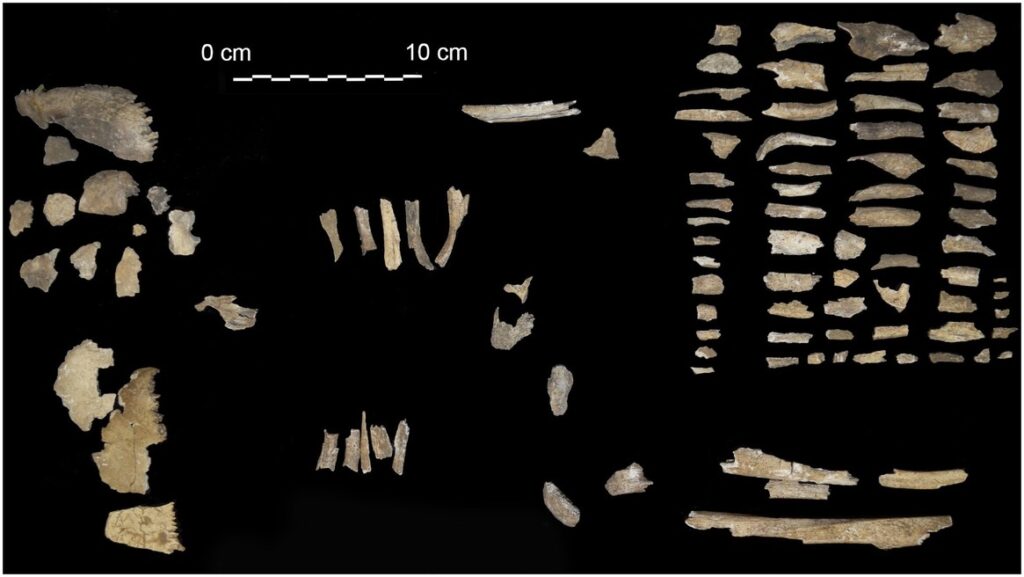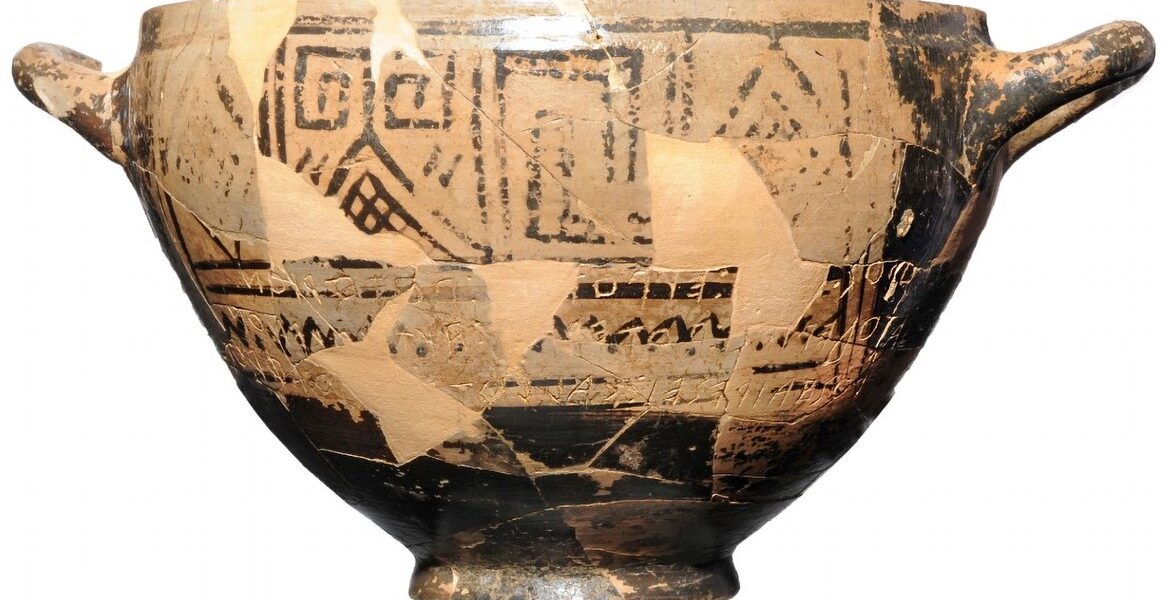A new study sheds light on the burial found on an Italian island. But questions remain as to who wrote the bawdy limerick that contains the first written reference to Homer’s epic poems
The Tomb of Nestor’s Cup, a burial that contained one of the oldest known Greek inscriptions, housed the cremated remains of at least three individuals, it turns out. A new study sheds some light on this mysterious burial from nearly 2,800 years ago on a southern Italian island but still doesn’t tell us who exactly was laid to rest there, or why they were memorialized with a dirty limerick that parodies the epic poetry of Homer’s Iliad and Odyssey.
First uncovered in the 1950s, the tomb was one of the thousands of burials in the necropolis of Pithekoussai, one of the first overseas colonies of the ancient Greeks, located on the picturesque island of Ischia, just off Naples.
The burial contained a rich set of grave goods, including a silver brooch and two dozen fragmented pottery vessels. But what caught the attention of the archaeologists was a small ceramic wine cup dated to the second half of the eighth-century B.C.E.
A cup found inside the tomb is inscribed with poetry that references the cup of Nestor written about by Homer. The verses on the cup from Pithekoussai roughly translate to “I am Nestor’s cup, good to drink from. Whoever drinks this cup empty, straightaway desire for beautiful-crowned Aphrodite will seize him,” according to a translation by classicist John Boardman. For that reason, the cup is sometimes referred to as Nestor’s cup, though it should not be confused with the golden ‘Nestor’s cup’ found at Mycenae in the 19th century.
Giorgio Buchner, one of the original archaeologists on the site who found the cup, wrote in 1966 that “the inscription is among the oldest known documents of Greek script and represents the first piece of poetry of Homeric times preserved in contemporary writing.

The recent team’s interpretative work was complicated by the fact that the tomb’s burial mound was destroyed to make way for subsequent burials. By the time that Buchner excavated the tomb in the 1950s (the digs that turned up Nestor’s cup scattered in the soil), it had already been disturbed millennia ago. A study of the cremated remains at the time determined only one individual was buried there, with estimates for their age at death ranging from 10 to 14 years old.
But the sheer number of goods buried in the tomb would mean that the deceased person was extremely important. So the recent team reexamined the cremated remains and, indeed, came away with a different conclusion.
“The morphological analysis of cremated remains allowed us to distinguish a few animal fragments from human ones,” Gigante said. Beyond that, she added, the histological analysis indicated that the burnt bone fragments belonged to three individuals rather than one, and none of them appeared to have been a child.
The researchers were not able to determine further details, like the ages of the people or exactly why they were buried with the cup. The animals, the team suspects, were included as food or friends for the afterlife (the animal bones appeared to belong to sheep, bulls, pigs, dogs, and birds, though the exact number of each animal was not determinable).
Whoever was actually buried in the tomb remains unclear, but now archaeologists can at least start deferring to the departed in the plural.


